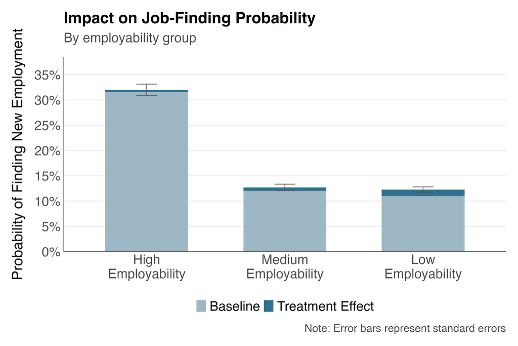


arxiv.org/pdf/2508.21536

arxiv.org/pdf/2508.21536

www.nber.org/research/vid...

www.nber.org/research/vid...
Policymakers need to understand how, and what to do about it.
Watch @Susan_Athey speak to G20 leaders about these issues tomorrow 16 July @ 13:30 CET. #G20SouthAfrica
bit.ly/3GyMFgm or bit.ly/44PTXFP
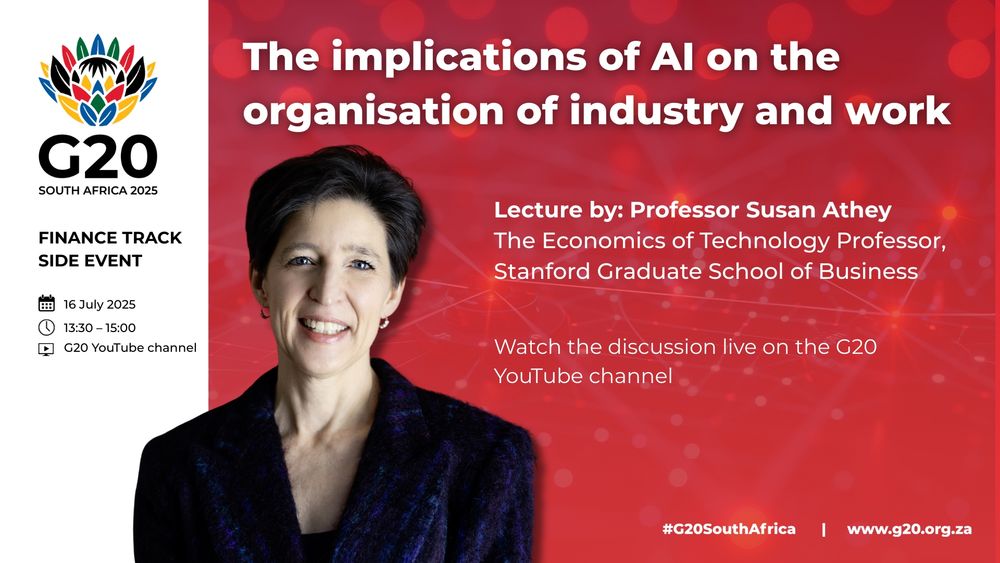
Policymakers need to understand how, and what to do about it.
Watch @Susan_Athey speak to G20 leaders about these issues tomorrow 16 July @ 13:30 CET. #G20SouthAfrica
bit.ly/3GyMFgm or bit.ly/44PTXFP
Ex: there are two kinds of managers: those who used to be engineers and those who didn’t. The first group gets paid more and has more males than the second.
Models that don’t use history omit this distinction.

Ex: there are two kinds of managers: those who used to be engineers and those who didn’t. The first group gets paid more and has more males than the second.
Models that don’t use history omit this distinction.
History explains a substantial fraction of the remaining wage gap when compared to simpler methods. But there’s still a lot that history can’t account for.

History explains a substantial fraction of the remaining wage gap when compared to simpler methods. But there’s still a lot that history can’t account for.
We consider 3 strategies similar to methods from the causal estimation literature. E.g. optimize representations to predict the *difference* in male-female wages instead of individual wages.
All perform well on synthetic data.
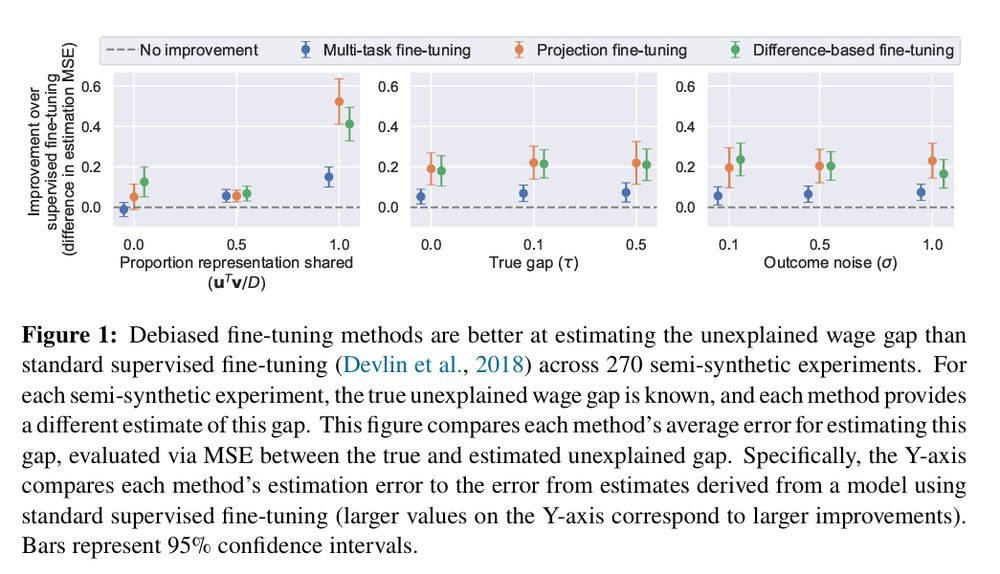
We consider 3 strategies similar to methods from the causal estimation literature. E.g. optimize representations to predict the *difference* in male-female wages instead of individual wages.
All perform well on synthetic data.
Two main fine-tuning conditions:
1. Representation only drops info that isn't correlated w/ both wage & gender
2. Representation is simple enough that it’s easy to model wage & gender from it
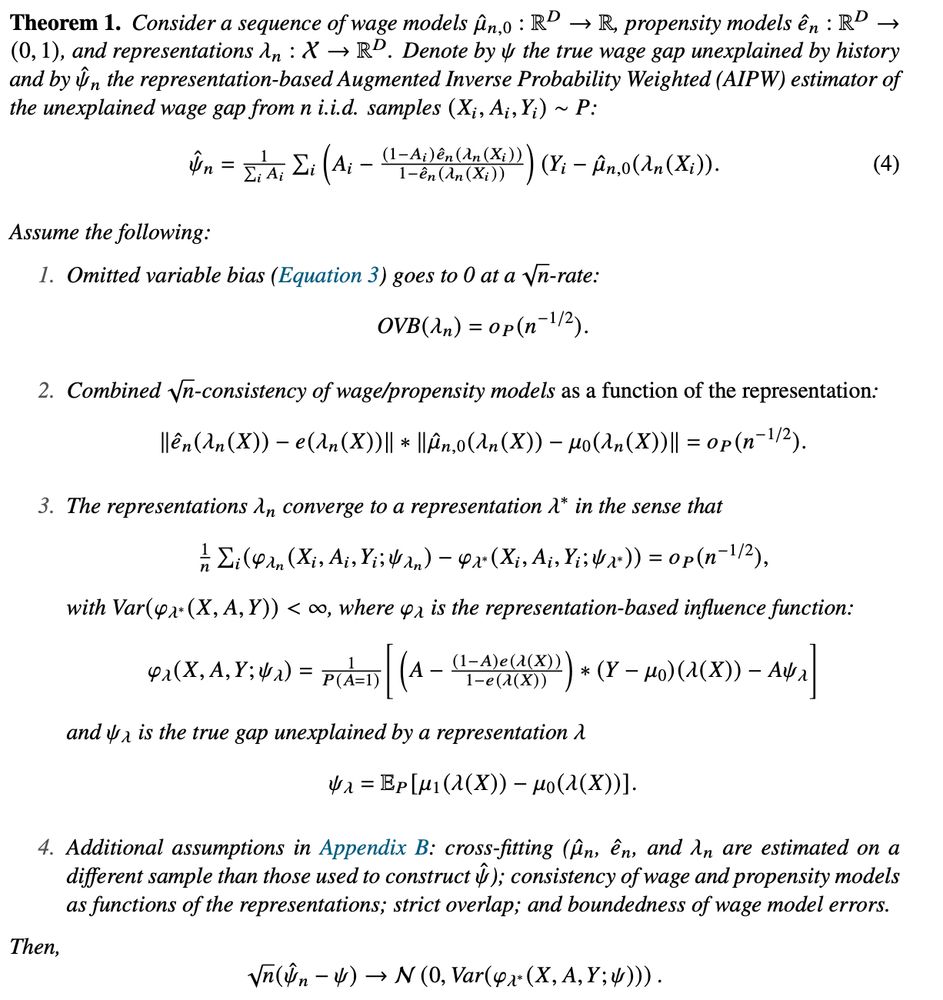
Two main fine-tuning conditions:
1. Representation only drops info that isn't correlated w/ both wage & gender
2. Representation is simple enough that it’s easy to model wage & gender from it
But representations fine-tuned this way can induce omitted variable bias: the gap adjusted for full history can be different from the gap adjusted for the representation of job history.
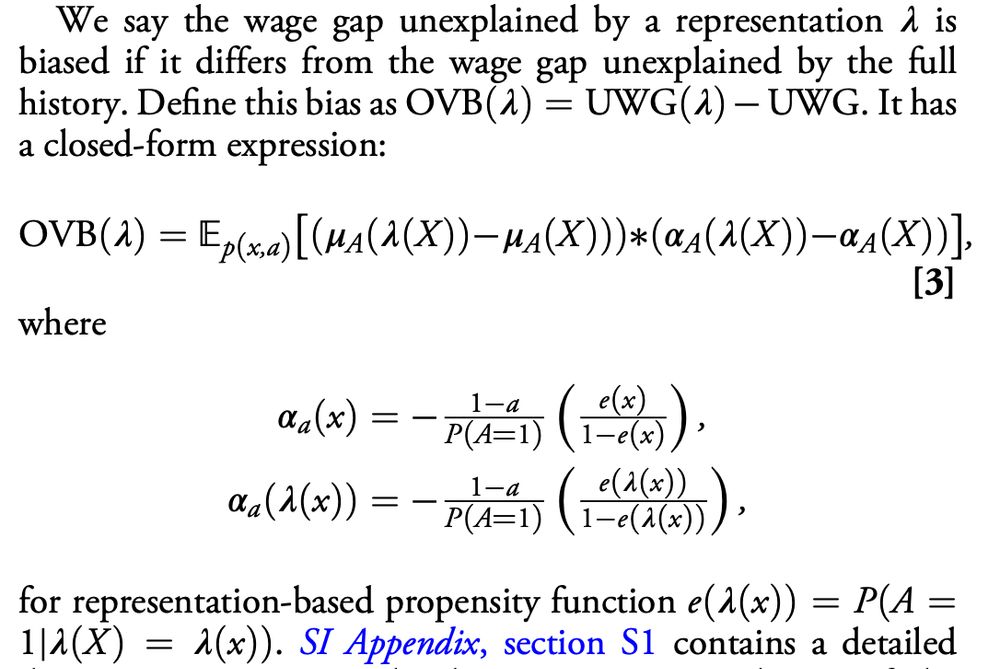
But representations fine-tuned this way can induce omitted variable bias: the gap adjusted for full history can be different from the gap adjusted for the representation of job history.
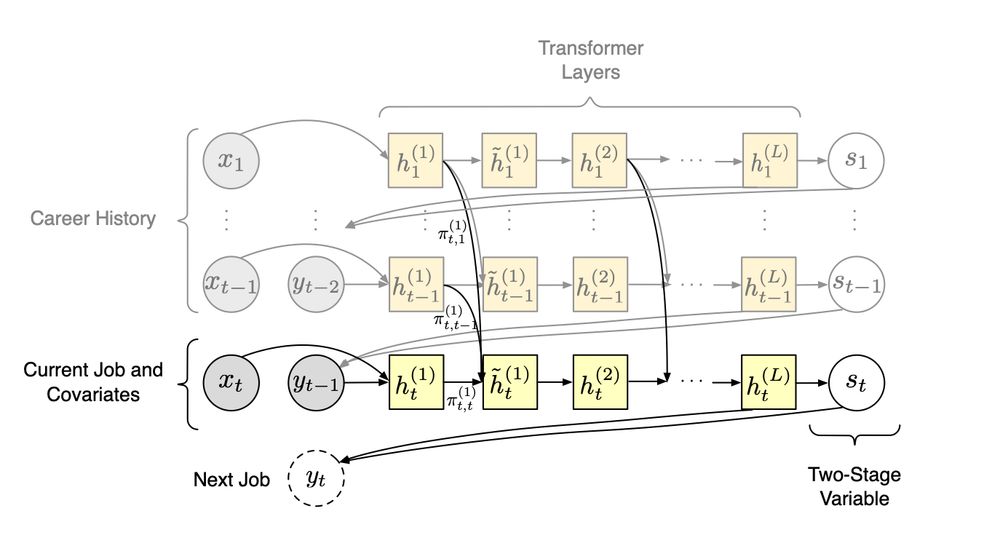
A large literature decomposes wage gaps into two parts: the part “explained” by gender gaps in observed characteristics (e.g. education, experience), and the part that’s “unexplained.”
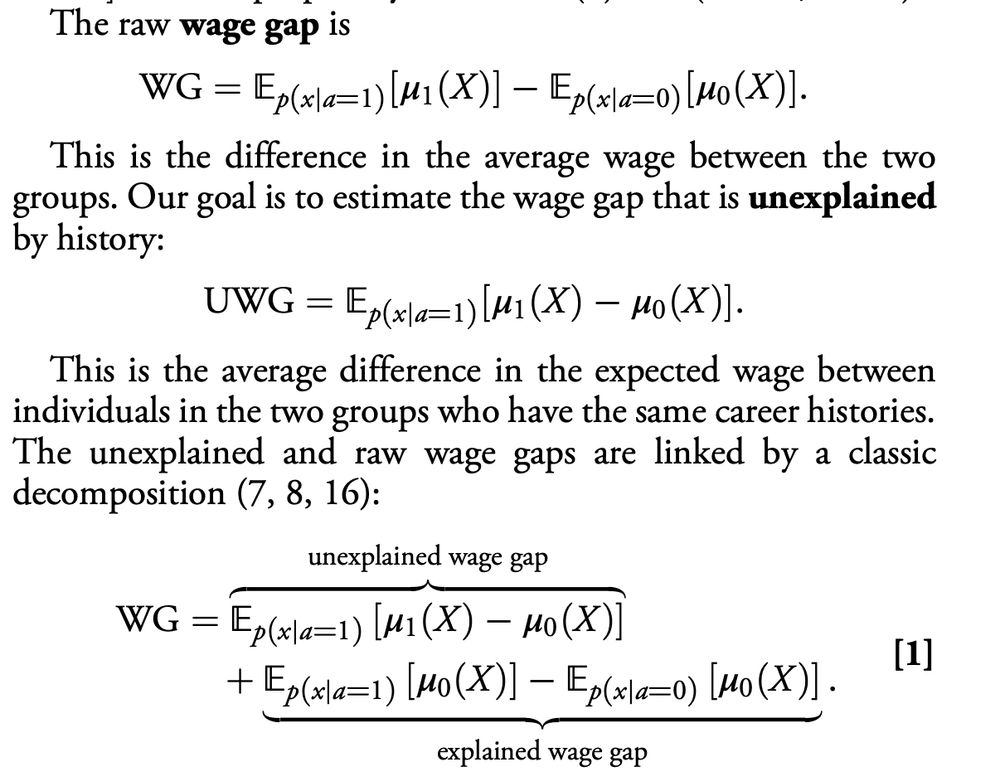
A large literature decomposes wage gaps into two parts: the part “explained” by gender gaps in observed characteristics (e.g. education, experience), and the part that’s “unexplained.”
New PNAS paper @susanathey.bsky.social & @keyonv.bsky.social & @Blei Lab:
Bad news: Good predictions ≠ good estimates.
Good news: Good estimates possible by fine-tuning models differently 🧵

New PNAS paper @susanathey.bsky.social & @keyonv.bsky.social & @Blei Lab:
Bad news: Good predictions ≠ good estimates.
Good news: Good estimates possible by fine-tuning models differently 🧵
